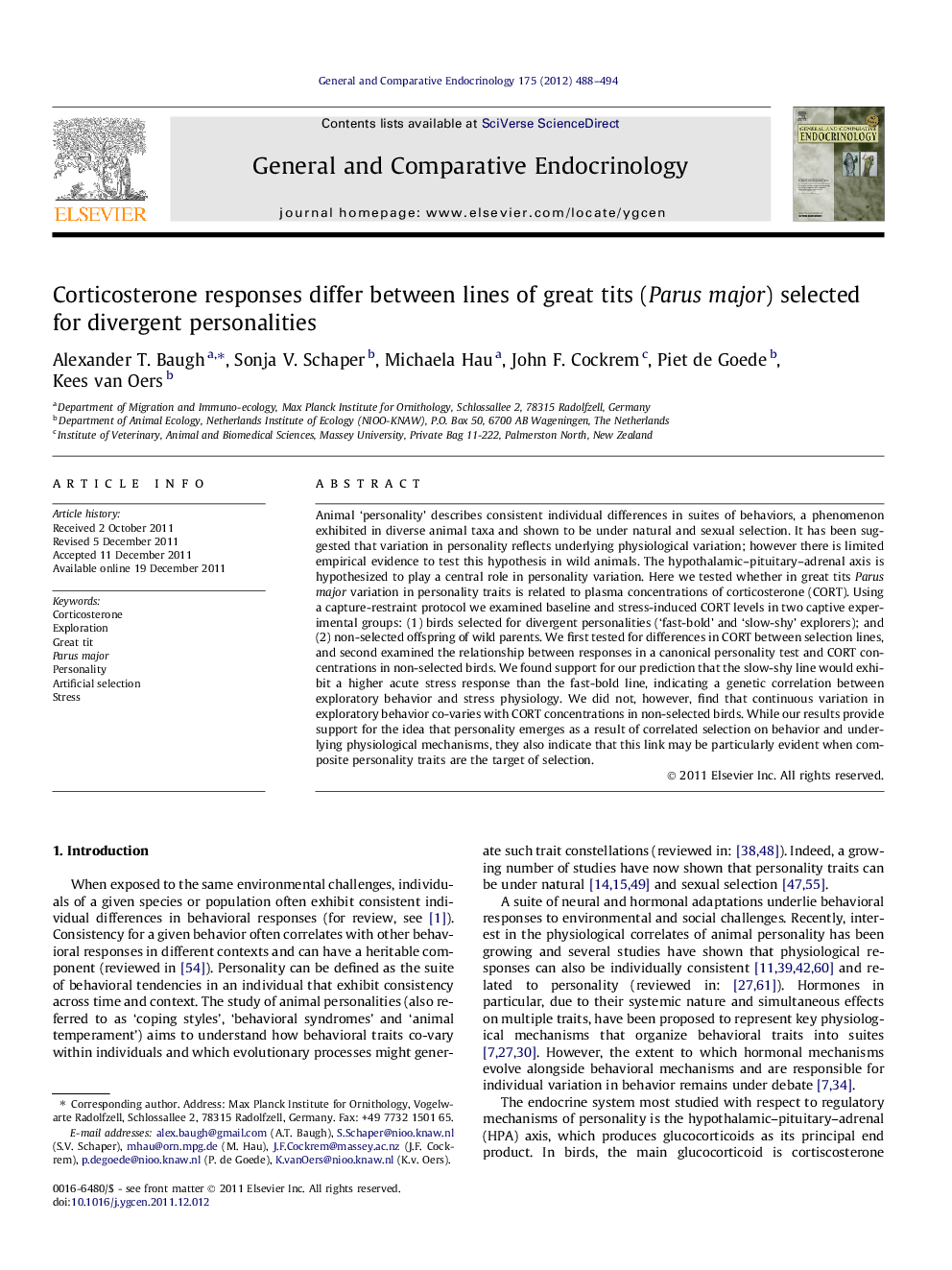| Article ID | Journal | Published Year | Pages | File Type |
|---|---|---|---|---|
| 2800649 | General and Comparative Endocrinology | 2012 | 7 Pages |
Animal ‘personality’ describes consistent individual differences in suites of behaviors, a phenomenon exhibited in diverse animal taxa and shown to be under natural and sexual selection. It has been suggested that variation in personality reflects underlying physiological variation; however there is limited empirical evidence to test this hypothesis in wild animals. The hypothalamic–pituitary–adrenal axis is hypothesized to play a central role in personality variation. Here we tested whether in great tits Parus major variation in personality traits is related to plasma concentrations of corticosterone (CORT). Using a capture-restraint protocol we examined baseline and stress-induced CORT levels in two captive experimental groups: (1) birds selected for divergent personalities (‘fast-bold’ and ‘slow-shy’ explorers); and (2) non-selected offspring of wild parents. We first tested for differences in CORT between selection lines, and second examined the relationship between responses in a canonical personality test and CORT concentrations in non-selected birds. We found support for our prediction that the slow-shy line would exhibit a higher acute stress response than the fast-bold line, indicating a genetic correlation between exploratory behavior and stress physiology. We did not, however, find that continuous variation in exploratory behavior co-varies with CORT concentrations in non-selected birds. While our results provide support for the idea that personality emerges as a result of correlated selection on behavior and underlying physiological mechanisms, they also indicate that this link may be particularly evident when composite personality traits are the target of selection.
► We tested for a link between personality and corticosterone responses in great tits. ► Artificial selection on a composite personality score resulted in differences in CORT responses. ► The slow-shy line had higher stress-induced levels than the fast-bold line. ► In non-selected birds exploratory behavior did not co-vary with CORT levels. ► Selection on personality structure drives a correlated response in HPA reactivity.
